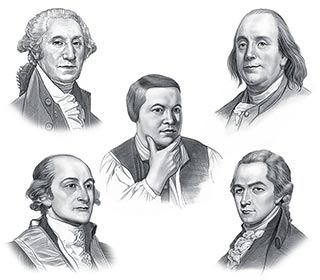Proclamation of 1763 Summary and Definition
British Proclamation of 1763 Summary and Definition: The Royal Proclamation of 1763 was issued October 7, 1763, by King George III following Great Britain's acquisition of French territory in North America following the end of the French and Indian Wars with the Peace of Paris which concluded the Seven Years' War in Europe and the French Indian War in America. The Royal Proclamation of 1763 was designed to calm the fears of Native Indians by halting the westward expansion by colonists whilst expanding the lucrative fur trade. Refer to Royal Proclamation of 1763 for the actual words and text.
Royal Proclamation of 1763 - The Fur Trade
The British had a financial reason for the Royal Proclamation of 1763. Their victory in the French and Indian Wars enabled them to monopolize the highly lucrative fur trade, also refer to Triangular Trade. They wanted to improve and expand trade further which involved the Native American Indians who lived on the frontier. The fight to monopolize the fur trade in French territory had led to the the bloody conflict known as the Beaver Wars in 1640 - 1701 against the Iroquois Confederacy.
Royal Proclamation of 1763 - The Proclamation Line
The Royal Proclamation of 1763 at the end of the French and Indian War established the controversial Proclamation Line along the Appalachian Mountains safeguarding Indian lands and territories and repaying the Native American Indians who helped the British during the war. Many of the American Indians, primarily in the Great Lakes region, had close relationships with France and were appalled to find that they were now under British control. Pontiac's Rebellion during the Pontiac War (1763–66) was an unsuccessful effort by Native American Indians to prevent Great Britain from occupying the land previously claimed by France and this hastened the implementation of the Royal Proclamation of 1763. The Royal Proclamation of 1763 was an attempt by the British crown to separate white settlements from Indian country. The colonists perceived that the Royal Proclamation of 1763 clearly demonstrated that the British King was on the side of the Indians to the detriment of the colonists.
Royal Proclamation of 1763 - Manning the Proclamation Line
The introduction of the massive boundary, which was the Proclamation Line, would require the establishment and the manning of posts along the border. A costly venture which the British administration argued was for the defence of the colonists. It was therefore deemed that the costs should be paid for by the colonies. From the perspective of the colonists this amounted to a tax to pay for a boundary to lands that was against the interests of the British Colonies.
